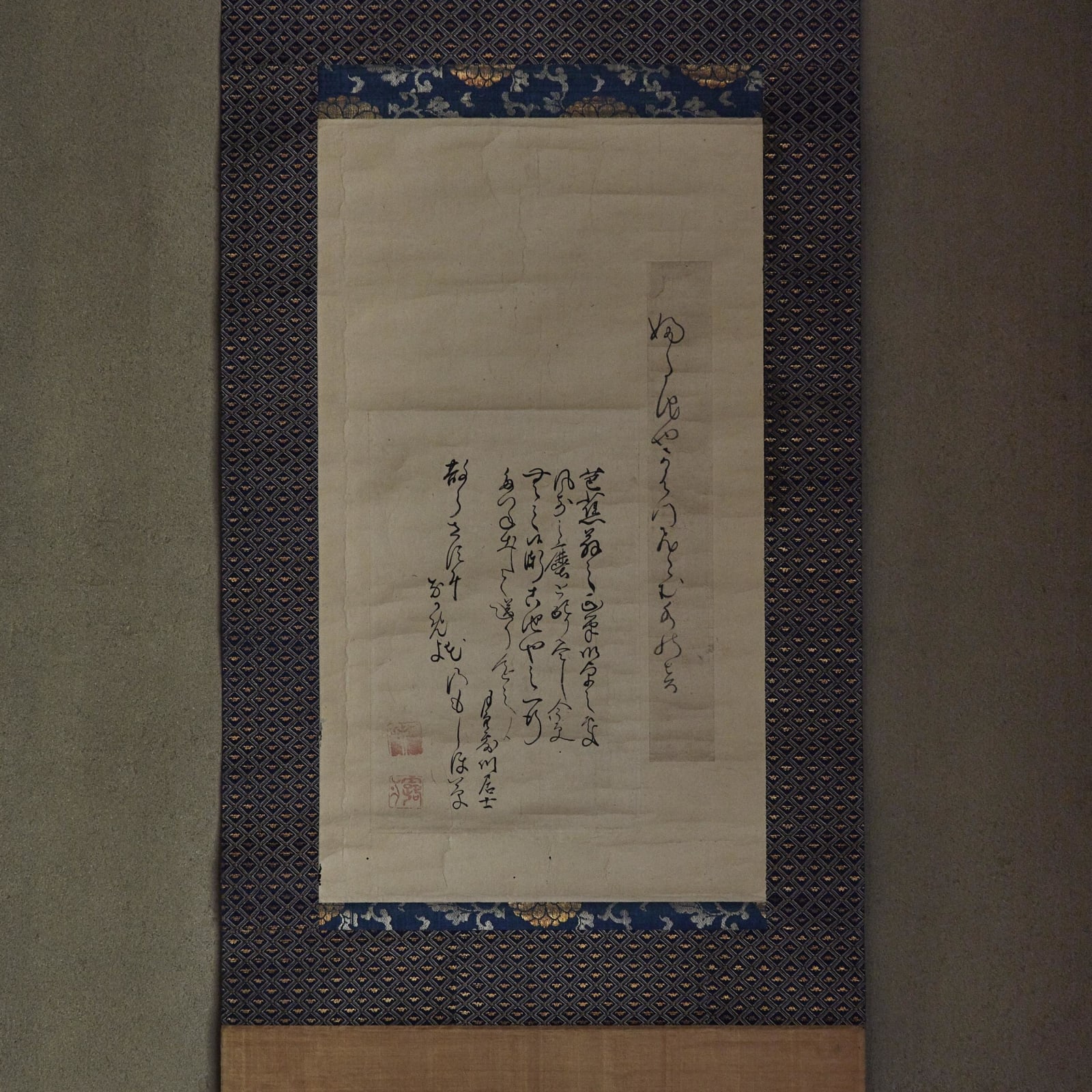Matsuo Bashō (1644−1694)
Hokku Poem
Ink on paper, hanging scroll
Pasted together with a transfer deed by Sawa Rosen (1661–1743)
With a letter and box authentication by Okada Rihei (1892–1982)
30.3 x 4 cm
130 x 39 cm (overall)
Pasted together with a transfer deed by Sawa Rosen (1661–1743)
With a letter and box authentication by Okada Rihei (1892–1982)
30.3 x 4 cm
130 x 39 cm (overall)
Literature
Basho zen zufu. Tokyo: Iwanami Shoten, 1993.
The present work is included in Basho zen zufu, or the complete works of Basho, under the category of Hokku, or the opening stanza of renga. Other works published in the same category are thought to have been written impromptu or on his way of travelling. Although we are unsure about under what situation the present work was produced, its style appears rather relaxed than those written on tanzaku or shikishi. In the present work, following Basho’s writing there pasted a transfer deed written by his student Sawa Rosen, which reads: “Although [you have been] looking for Basho’s handwritings, I have given all of those out, and have none left just as dust blown by the wind. Finally, I found this piece, thus I dedicate it to you.” Rosen also included his poem, which suggests his addressee “to cherish the present writing which is as ephemeral as a flower that would quickly disappear.” Within the storage box of this work are a long article by an anonymous author which is copied in the Basho zen zufu, and a letter written by the Japanese literature scholar Okada Rihei to the owner of the work in 1969. In this letter, Okada approved that the work is “definitely written by Basho,” so did Rosen who wrote “[is] no doubt of Basho’s writing.” As Rosen became Basho’s student in 1691 in Edo, and met Basho in Nagoya in 1694, Okada suggests that this work might have been written in either timing. While Rosen’s writing style belongs to his late years, Okada considers it being written during the Kyoho period (1716–36).
Matsuo Basho (haiku poet; 1644−1694)
Also known as Munefusa; Tosei; Hakusendo; Bashoan; etc.
Iga-born mid Edo period haiku poet. First learned the Teimon-ha style of haiku poetry composition after Kitamura Kigin, and later gained inspiration from the Danrin-ha style after moving to Edo. Through numerous travels, Basho set up the Shofu style that had elevated haiku to a form of high art.
Matsuo Basho (haiku poet; 1644−1694)
Also known as Munefusa; Tosei; Hakusendo; Bashoan; etc.
Iga-born mid Edo period haiku poet. First learned the Teimon-ha style of haiku poetry composition after Kitamura Kigin, and later gained inspiration from the Danrin-ha style after moving to Edo. Through numerous travels, Basho set up the Shofu style that had elevated haiku to a form of high art.



